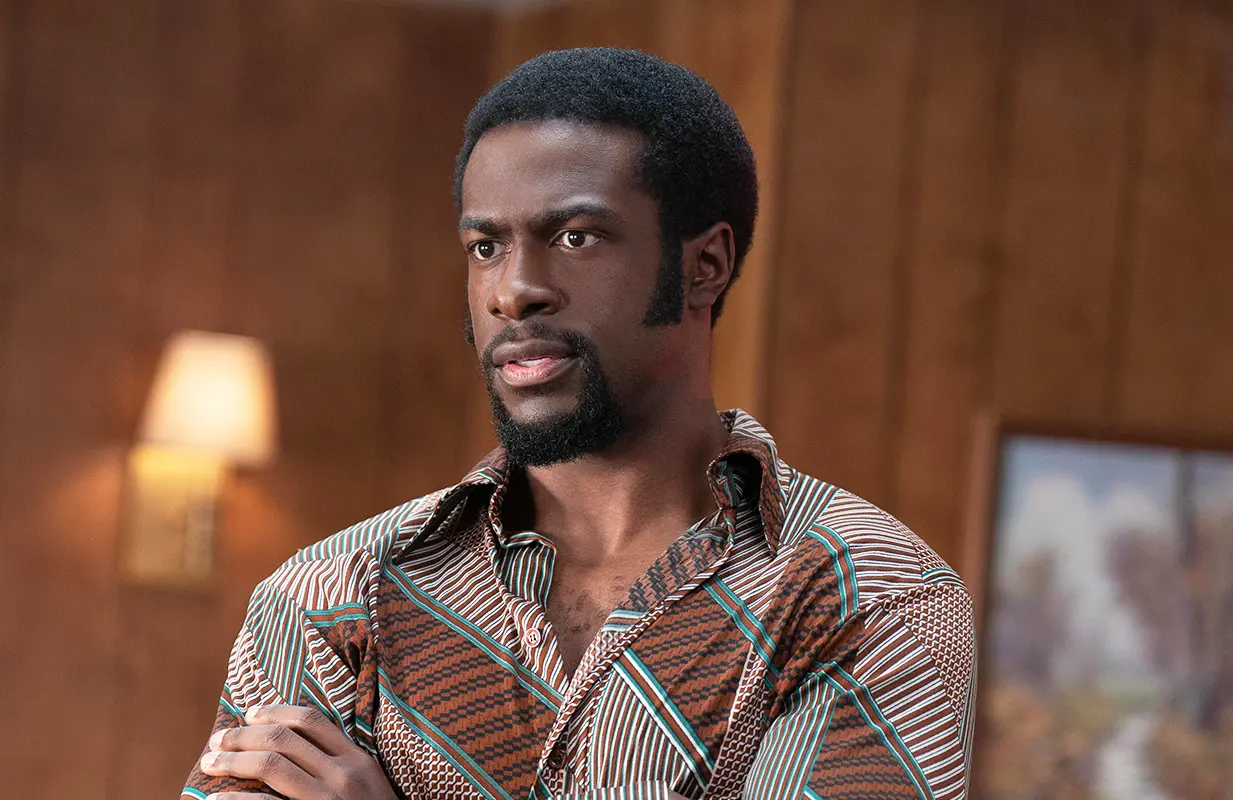Quentin Plair Gives the Chippendales Dancers Much-Needed Interiority in a Standout Episode
-
 Quentin Plair in Welcome to Chippendales (Photo: Erin Simkin/Hulu)
Quentin Plair in Welcome to Chippendales (Photo: Erin Simkin/Hulu)Spoilers ahead for the fourth episode of Welcome to Chippendales, “Just Business.”
With so much time and attention spent on the long-simmering feud between Chippendales founder Steve Banerjee (Kumail Nanjiani) and choreographer Nick De Noia (Murray Bartlett), the dancers of Welcome to Chippendales have been relegated to the background, despite their bedazzled throngs and tearaway pants. That’s been the case throughout the first three episodes of Hulu’s limited series, but in Episode 4, “Just Business,” Quentin Plair’s Otis finally gets the showcase he, and the rest of the dancers, deserve, elevating the series from a Nanjiani-Bartlett two-hander into something much more expansive.
While the first three episodes of Welcome to Chippendales are loaded with exhilarating dance routines, we learn hardly anything about the performers making Steve’s business (and these scenes) such a success. Who are these men who spend their nights stripping before rowdy crowds of women? What brought them to Chippendales? How do they feel about being objectified? Chippendales is so uninterested in these questions that the dancers are barely given names or dialogue. When they do speak, they’re depicted as complete buffoons desperately in need of a babysitter, as Denise (Juliette Lewis) learns when one of the men eats a pastrami sandwich in his costume, staining his shirt with mustard. “It’s just so tasty,” he whines, while a frustrated and overwhelmed Denise undresses him from the waist-up.
Nanjiani and Bartlett’s performances are so fully-formed and effervescent from the start that it can be easy to overlook the dancers’s limited role in the action (I admit to doing so myself). But upon re-watching, it’s frustrating that the performers are sidelined, which is why the Plair-centered episode is so satisfying, and so essential to the overall narrative.
As the lone Black dancer at the club, Otis stands apart from the others, in more ways than one. When he’s first introduced in the audition scene in Episode 2, he gets something approximating a backstory: We learn he’s an actor who sees dance as a way to expand his opportunities and make a name for himself (he spent a year-and-a-half in the “Godspell” touring company, a fact that immediately impresses Nick). Unlike the other dancers, who brainlessly stuff their drawers with singles, Otis is eager to take on more responsibilities at the club, and he sees Steve as a mentor figure who can teach him how to make it as a man of color in a white-dominated industry. What Otis doesn’t understand is that Steve sees him not as a mentee — or even as a person — but as an object to the fetishized and commodified. “He is Black,” Steve tells Nick, after Otis makes the final cut at auditions. “Customers will love it.”
This unspoken tension comes to a head in “Just Business,” when Otis realizes he’s been intentionally excluded from the Chippendales calendar, one of Steve’s first country-wide PR efforts. In one of the season’s most devastating encounters, Steve says including Otis’ photo “would be bad for sales,” as white men might be “threatened” by a “naked Black man” hanging in their home. After all, Steve condescendingly reminds him, “In business there’s only one color that matters: green.”
Plair’s performance in this scene conveys more about his character than any backstory about his ambitions ever could. Otis is unafraid to push back when Steve uses casual racism as a justification for his own bigoted behavior — “I think most people can handle a shirtless Black man, Steve,” he says — and as his boss continues to lecture him about “business,” his entire body exudes contempt. He may understand what Steve is saying, but he’s not the type of man to just sit back and accept it.
After his conversation with Steve, Otis’ concerns about the way his body is being used by the club, which he stuffed down after his first performance in Episode 2, “Four Geniuses,” become too great to ignore. He convinces Steve’s lackey Ray (Robin de Jesús) to help him make a calendar of his own, which Steve interprets as an act of betrayal. Steve’s reaction is the last straw for Otis, who forces Steve to confront his own bias before quitting Chippendales for good. Even with the entire world telling him he’s less-than, Otis knows he deserves better, and he’s unafraid to act on those feelings, regardless of the consequences.
Aided by Plair’s powerful work, Otis’ moral stand is the first time the concerns of the dancers are truly prioritized on screen, and the season, as a whole, benefits from this added perspective. Without it, the dancers of Welcome to Chippendales would be nothing more than chess pieces in Steve and Nick’s war, sexy ornaments to be fiddled with as the men in power see fit — a disappointing act of commodification in its own right.
New episodes of Welcome to Chippendales drop every Tuesday on Hulu.
People are talking about Welcome to Chippendales in our forums. Join the conversation.
Claire Spellberg Lustig is the Senior Editor at Primetimer and a scholar of The View. Follow her on Twitter at @c_spellberg.
TOPICS: Welcome to Chippendales, Hulu, Kumail Nanjiani, Murray Bartlett, Quentin Plair